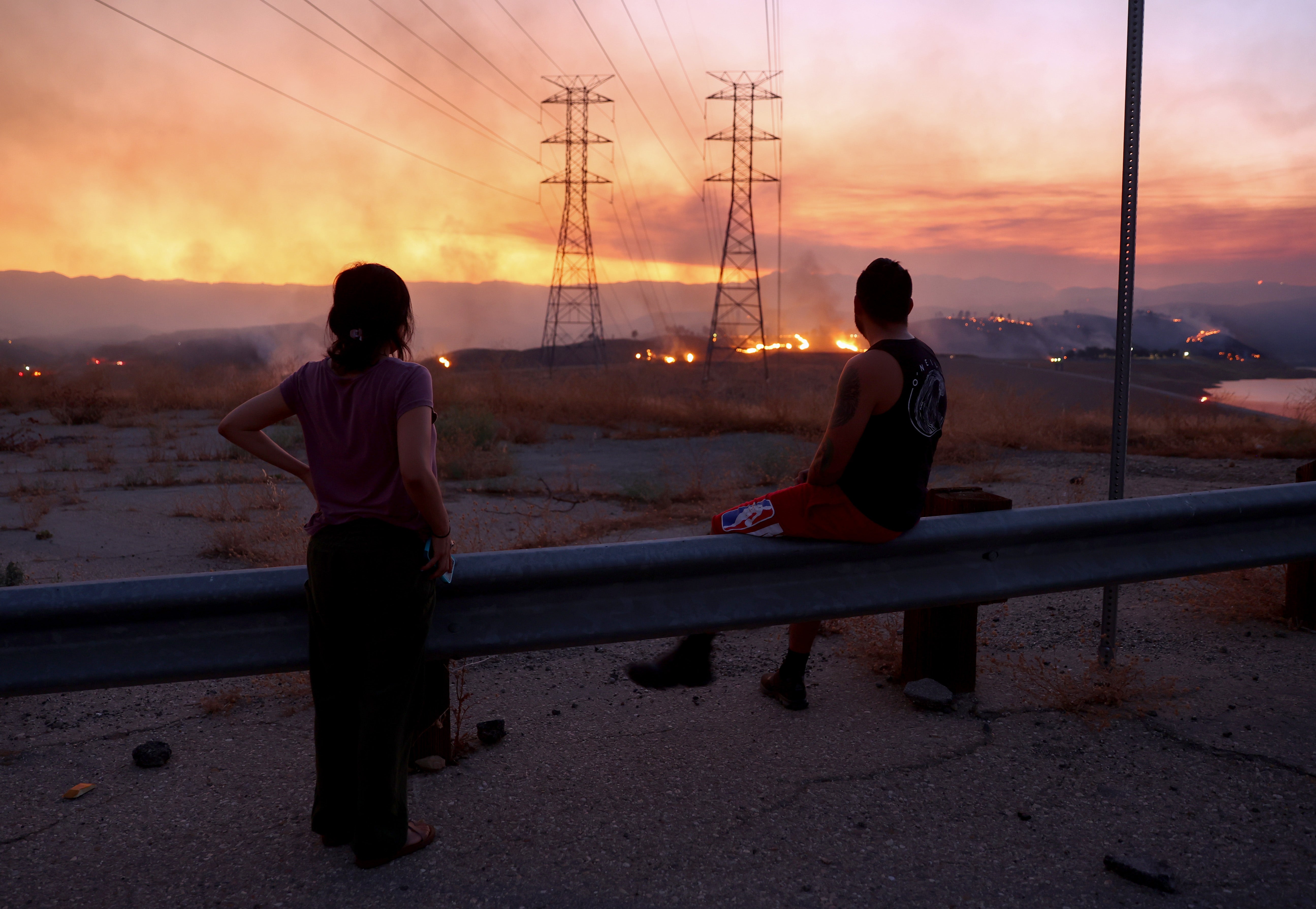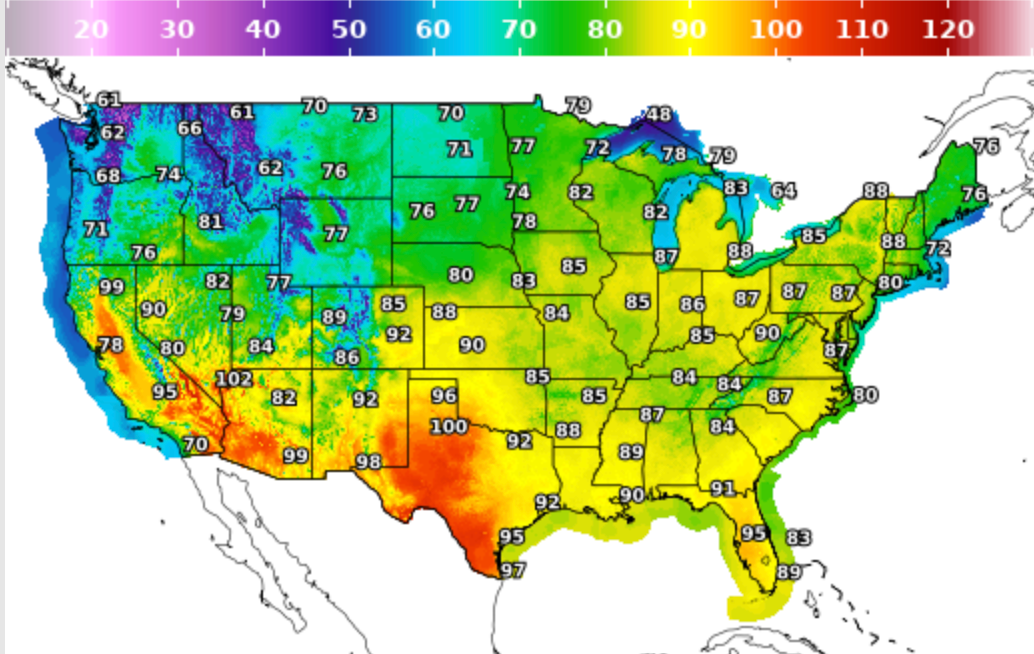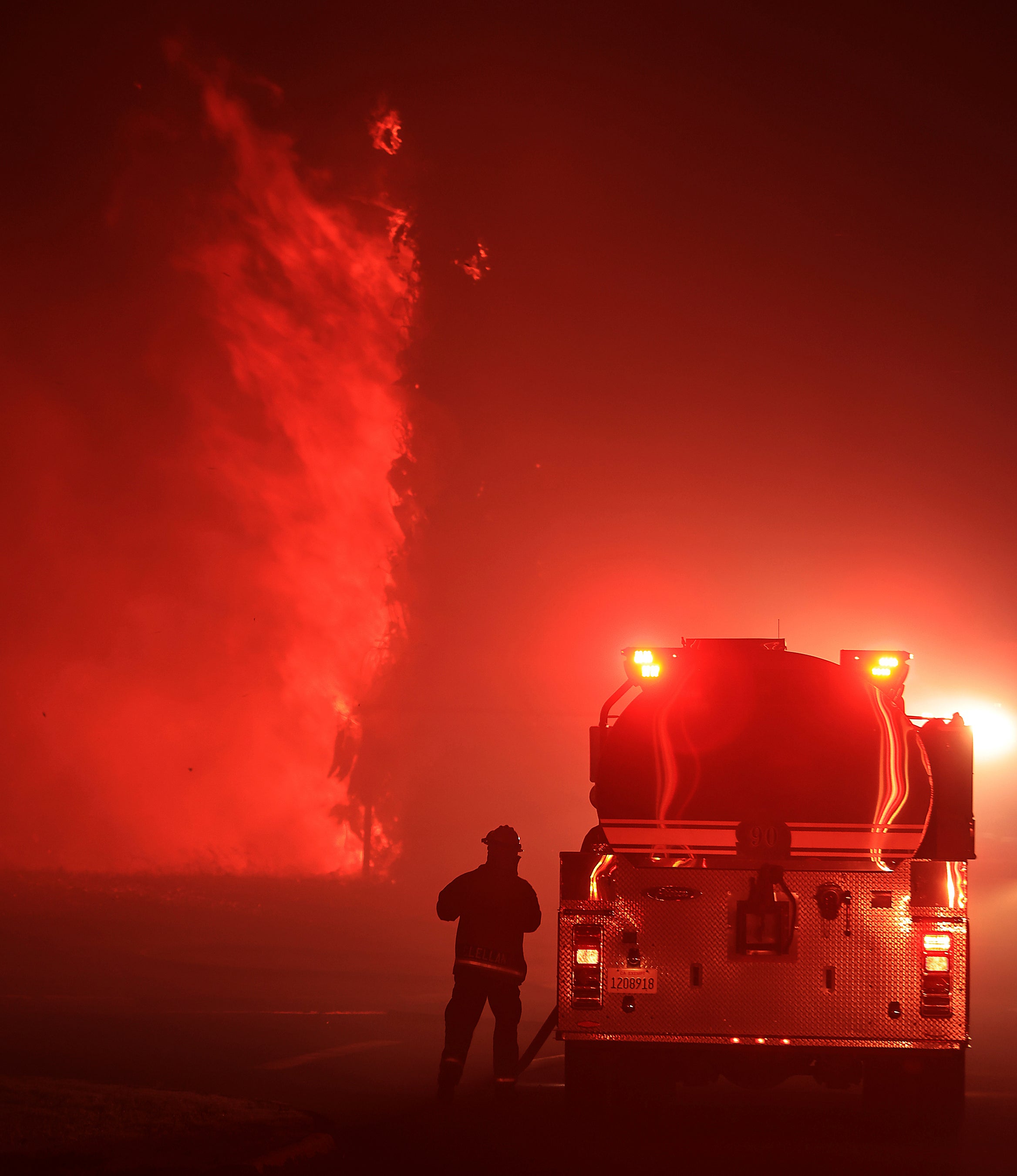‘Heat dome’ settles over West Coast with 112F temps creating deadly conditions for 10m and sparking wildfire fears
More than 10 million people in California, Nevada and Arizona are expected to be affected by the phenomenon, which will bring ‘dangerous heat’ to regions across all through the rest of the week

Temperatures on the West Coast are expected to peak into triple figures for the first time this year due to a large “heat dome” that may bring further wildfires and potentially life-threatening conditions.
More than 10 million people in California, Nevada and Arizona are expected to be affected by the phenomenon, which will bring “dangerous heat” through the week.
The National Weather Service said by Thursday, the level of risk of heat-related impacts will be “extreme” in parts of all three states.
“This level of rare and/or long-duration extreme heat with little to no overnight relief affects anyone without effective cooling and/or adequate hydration. Impacts likely in most health systems, heat-sensitive industries and infrastructure,” according to the forecaster.
Such conditions are caused by a “heat dome,” a large area of high pressure that stops over an area, traps air and heats it with abundant sunshine for days or weeks. The resulting heat becomes more intense the longer a heat dome lasts.
Spending extended periods outside in high temperatures can lead to severe health risks, including heat stroke, dizziness and sun burns. Those older than 65, are at a higher risk of illness from the heat.


Temperatures are expected to start rising Tuesday, with Sacramento, California, predicted to match its highest ever temperature of 103F. Further south in Stockton and Modesto, temperatures also enter into triple figures, at 101F and 100F, respectively.
On Wednesday the extreme temperatures are predicted to make their way further south with triple digits hitting the cities of Bakersfield, Lancaster and Victorville – around 80 miles from Los Angeles.
California’s Death Valley, the hottest place on earth, is predicted to reach 120F by Thursday. Though the area has seen much higher temperatures, such numbers do not typically come so early in the year.

Nearby areas of the Golden State will be equally scorching, with Shoshone hitting 119F.
Other parts of the West Coast will also see increasing temperatures, with Phoenix, expected to peak at 112F on Thursday, according to Accuweather.
In Las Vegas, temperatures are forecast to hit 108F on Wednesday, 111F on Thursday and 110F on Friday, breaking previous record temperatures on each day.
It comes as parts of the West Coast, including in California, have already experienced wildfires, with experts warning that the extreme heat may exacerbate conditions for more blazes.
The Corral Fire, which began south of Tracy, California, consumed more than 14,000 acres of land in San Joaquin County since it ignited. Residents were ordered to evacuate over the weekend.
Firefighters gained an upper hand as winds eased Sunday and the blaze was 75 percent contained by Monday morning, according to the California Department of Forestry and Fire Protection.
Evacuation orders were downgraded to warnings, though county officials urged residents to remain vigilant and be ready to leave at a moment’s notice.
It follows smaller fires in the Los Padres National Park in Santa Barbara County last week.
Last year, intense heatwaves blistered the US with over 113 million Americans under heat warnings at their peaks.
In July the mercury has hit 110F in Phoenix for 13 days in a row, causing officials to advise residents to limit outdoor activities, and be alert to signs of heat exhaustion and heat stroke.
Parts of California including the Central Valley, the Mojave and Sonoran desert regions, as well as Nevada, were also warned to prepare for extreme heat.
Join our commenting forum
Join thought-provoking conversations, follow other Independent readers and see their replies
Comments
Bookmark popover
Removed from bookmarks